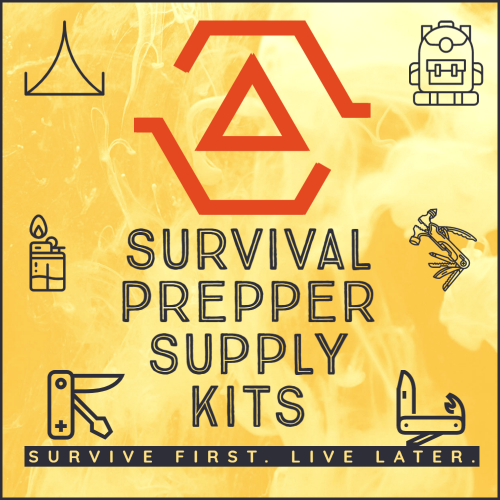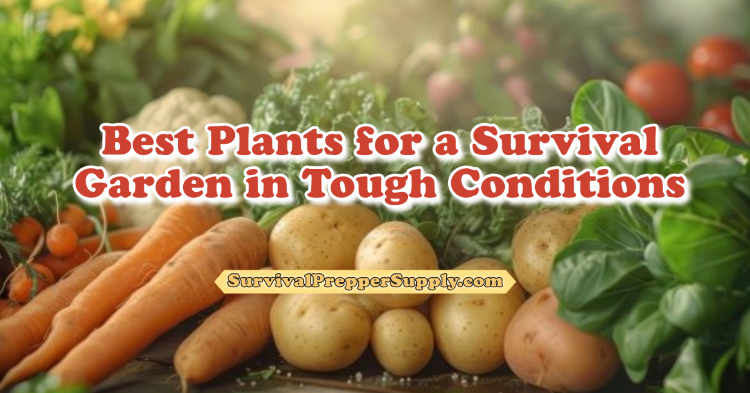Introduction to Survival Gardening
I manage my own survival garden, and I’ve found it to be a strategic component of self-sufficiency. I didn’t have a full garden last year due to having a bad fall that resulted in a shattered upper arm and elbow. A bunch of hardware in my arm and around my elbow later (I have some osteoporosis), a couple of months of PT, and it’s fine. I had a reverse shoulder replacement on the same arm two years prior to the fall. That can cause a shattered arm if you fall on it.
I started my winter garden in February 2024, so it was a late winter garden that continued to grow (at a bolt) greens until I pulled them out for the summer garden. I love walking through my garden, pulling kale and greens leaves to eat raw.
I also love to pull off some parsley to eat – I have two kinds that keep growing back every year! I also plant new parsley around the old. I have almost all herbs growing, including two raised beds with rosemary that have been growing for like 8-10 years!
Please note that this post contains affiliate links, meaning I will get a small commission for qualifying purchases at no extra cost to the buyer.
A survival garden is for anyone who wants to ensure access to food regardless of store shortages or other disruptions. It’s about cultivating a plot of land with plants that will aid your survival in tough conditions. Think of it as a buffer against uncertainty, where you get to call the shots on sustainability and food security.
The plants we’ll discuss aren’t just any garden variety; resilience is critical. I’m talking about the green champions that shrug off drought, poor soil, and extreme temperatures. They’re the hardy heroes that can flourish where others falter. And while toughness is essential, it’s not the only trait that matters. I’ll guide you through selecting plants that offer high nutritional value, are straightforward to grow, resistant to pests and diseases, and yield plentiful, storable harvests.
A survival garden packed with these steadfast plants can be your lifeline during challenging times. Let’s ensure you have the know-how to pick the best contenders for your garden arsenal.
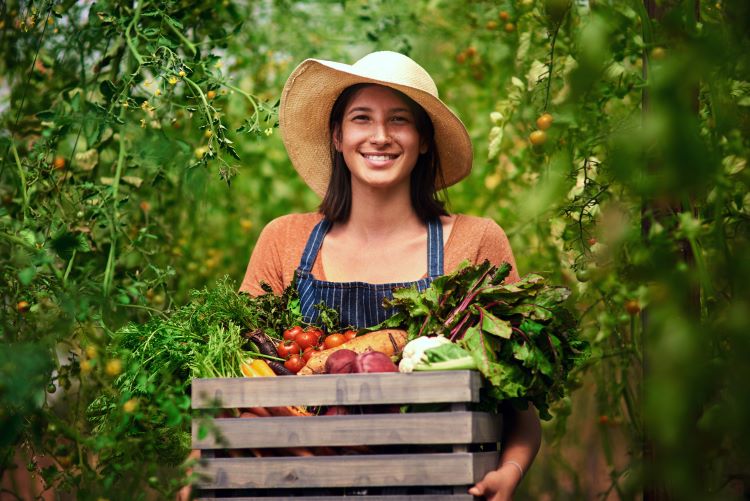
Criteria for Choosing Survival Garden Plants
I look for plants that deliver the greatest advantages under tough conditions, and you should, too. The best candidates for a survival garden thrive with minimal fuss, resist common threats, and provide ample nutrition or utility. Here are the key attributes to prioritize when selecting plants for your resilient garden.
- Drought tolerance is crucial. Plants that can survive with limited water reduce their reliance on consistent rainfall or irrigation. Look for varieties known to thrive in arid climates; they’re often your best bet.
- Nutritional value can’t be overlooked. In survival situations, you want plants with high levels of essential nutrients, such as leafy greens for vitamins and legumes for protein.
- Ease of growth translates to less labor and fewer resources spent. Plants that don’t require constant attention or specialized care save time and energy, allowing you to focus on other survival aspects.
- Pest and disease resistance is a plant’s armor against common garden adversaries. Opt for varieties known to be hardy against local pests and diseases, which means less work for you in management and fewer lost crops.
You also want to consider yield and storage capabilities. High-yielding plants maximize the return on your efforts, while those with a longer shelf-life or suitability for preservation methods like canning or drying extend the benefits of your harvest.
Top Resilient Vegetables for Your Survival Garden
Your plant choices are crucial when investing time and labor into cultivating a garden that withstands harsh conditions. It would be best to have crops that survive and thrive with limited resources and minimal upkeep.
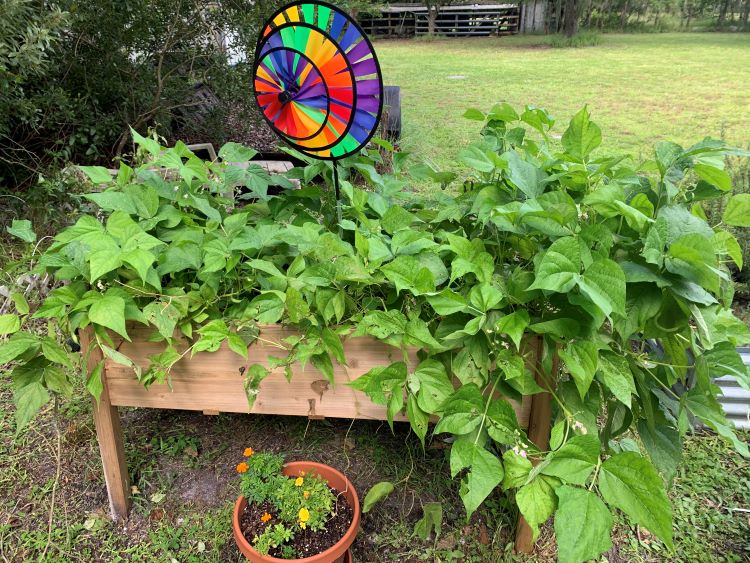
- Potatoes score high on the survival scale due to their caloric density and long-term storage potential. Easy to grow in various soils, these tubers can provide a steady food source when carefully cured and stored in a cool, dark place.
- Beans are another powerhouse in the survival garden. Rich in protein, they are a rare non-animal source of this essential nutrient. They can also be dried and stored for years without losing nutritional value. I have more summer beans growing. You can grow them in stages, so you always have a supply. Yum!
- Consider kale, a champion of the greens category. This robust leafy vegetable can withstand frost and grow in poor soil, making it ideal for various climates. Plus, its high vitamin and mineral content makes it a nutritious staple. It’s so good eaten raw! I would pick all the different kinds of greens, along with the kale and chard, and cook them in a pot with bacon or butter. It’s so good and good for you!
- Don’t forget about sweet potatoes. Beyond their rich vitamin A content, sweet potatoes can adapt to different soil types. Once harvested, they can be stored for months, providing a consistent energy source and nutrients.
- Squash varieties, such as zucchini and butternut, come with the bonus of a long shelf life. After harvesting, these vegetables can be kept for extended periods, so you can enjoy your produce well into the winter.
Hardy Herbs and Fruits: Flavor and Nutrition
When you’re planning a garden that can withstand challenging environments, don’t overlook herbs and fruits. These plants add variety and flavor to your diet and can also be surprisingly resilient. Let me zero in on some herbs and fruits that should be on your radar.
Rosemary, oregano, and thyme are standout herbs for tough conditions. I love rosemary, but not so much on the thyme. I do have a Texas Thyme and it’s not quite as licorice tasting.
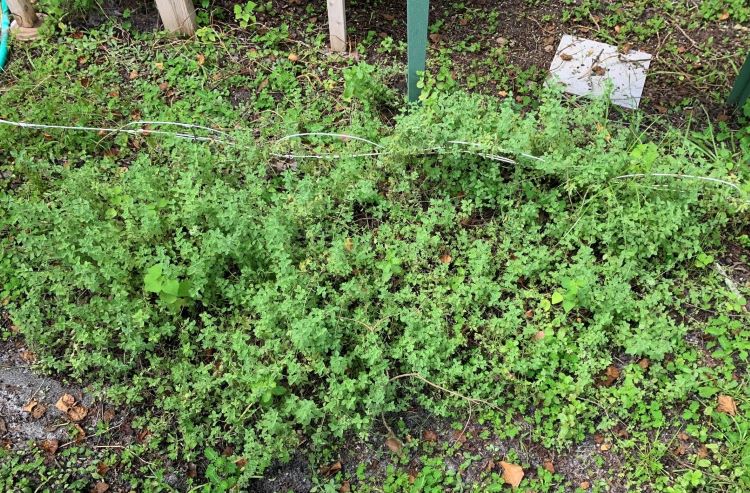
More oregano, rosemary, and a ton of mint are in raised containers.
These herbs thrive in areas with poor soil and can handle a bit of drought. These perennial herbs will give your garden a reliable flavor source year after year. Plus, they’re excellent for seasoning various dishes and can be easily dried and stored.
Consider berries for fruits you want to grow. Raspberries and blackberries are especially robust. (Remind your husband not to mow them down!) Once established, these herbs need minimal upkeep and can take on less-than-ideal soil. Another advantage of berries is their rapid growth and ability to spread, which can yield a substantial harvest.
Don’t forget about trees. Apple and pear trees are hardy choices with immense benefits. They take a few years to mature, but you can expect a steady supply of fruit once they do. These trees provide shade and structure to your garden, and their longevity means you’ll reap benefits for years.
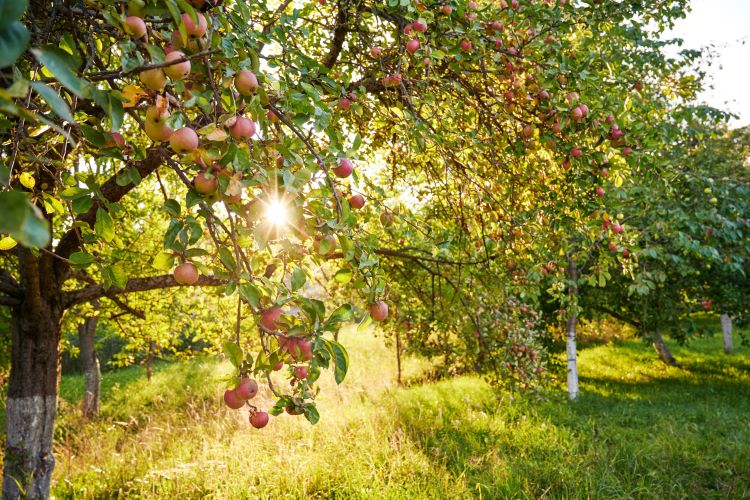
These fruiting plants and herbs bolster your garden’s resilience, but they also need a solid foundation to succeed. That leads us to considerations of garden management. I’ll talk next about how to enrich your soil, conserve water, and ensure that whatever you’re growing has the best chance to thrive, even when Mother Nature throws a curveball.
Managing Your Survival Garden
A survival garden is more than just planting hardy varieties; it’s about a holistic approach to ensure sustainability and productivity. I’ll discuss soil improvement, water conservation, and preservation methods to help you manage your garden efficiently.
I remember first starting my garden 14 years ago. I had a horse and used her manure. What a great garden I had! If you have access to some, never use fresh manure! It must sit for about a year, so it won’t burn your plants.
- In terms of soil improvement, start with composting. It’s SIMPLE and EFFECTIVE. Add organic material like kitchen scraps and yard waste to a compost bin. Over time, the material breaks down and becomes a rich supplement for your garden soil. This natural amendment improves soil structure, nourishes plants, and increases water retention. I also use fish emulsifier. Stinky, but effective!
- Then there’s crop rotation, a simple yet impactful practice. I make it a point to plant different types of crops in various parts of my garden each year to prevent soil depletion and reduce the risk of disease. It’s like giving your soil a well-deserved break and a fresh start.
- Maintaining a garden teeming with life all starts beneath our feet. By giving soil the affection it needs through practices like composting, crop rotation, and using natural fertilizers, I enable the earth to give back tenfold.
- With a robust soil foundation, we can then move on to the next pillar of garden management: water. Without proper hydration, even the richest soil can’t keep a garden thriving. In the following section, I’ll cover practical water conservation strategies that are easy to implement and essential for the longevity of your survival garden.
- Water conservation is critical in tough conditions. Mulching is your friend here. Applying a layer of mulch around plants reduces water evaporation, keeps roots cooler, and deters weeds. Moreover, consider installing a drip irrigation system to deliver water directly to the roots, reducing waste.
Harness the full potential of your survival garden by mastering preservation methods. Learn basic techniques like canning, drying, and pickling. These methods extend the shelf life of your harvest and ensure a year-round supply of homegrown food. I gotta admit – I’m new to canning and drying.
Conclusion: Thriving in Tough Times with Your Survival Garden
A well-planned survival garden is more than a food source; it’s a step towards self-sufficiency and resilience in challenging conditions. By focusing on the hardiest varieties of vegetables, herbs, and fruits, you can create a robust system that provides for your nutritional needs and connects you to the natural growing and harvesting cycle.
Embrace the rewards of gardening by celebrating each successful harvest and learning from the challenges. Your efforts will yield nutritious produce and valuable lessons in persistence, innovation, and adaptability.
Remember, the true measure of success in survival gardening isn’t defined by how much you grow but by the skills and knowledge you gain in the process. Through patience and continuous learning, you’ll find that each season brings its own victories, strengthening you and your garden against whatever the future may hold.
Q&A: Expert Answers to Common Concerns
Let’s transition to addressing some common questions gardeners have about managing harsh conditions. The following section will tackle queries about adapting plant choices, wildlife management, and maximizing limited garden spaces.
Adjusting Plant Selection for Different Zones
- Understand the USDA Hardiness Zones: Familiarize yourself with the USDA Hardiness Zone map to know which plants are suitable for your area. Each zone is based on the average annual minimum winter temperature, which helps determine the plants that will thrive in your climate.
- Research Local Plants: Choose native plants or those adapted to your specific zone. These plants are more likely to thrive and require less maintenance.
- Consider Microclimates: Within your zone, microclimates can vary due to factors like elevation, proximity to bodies of water, and urban heat islands. Tailor your plant selection to these specific conditions.
- Seasonal Adjustments: Select plants that bloom or are at their peak during different seasons to ensure year-round interest and color in your garden.
- Soil and Water Needs: Choose plants based on the soil type and moisture levels typical in your zone. Some zones might have sandy soils, while others have clay or loam.
Strategies for Contending with Wildlife
- Fencing and Barriers: Use physical barriers like fences or netting to keep wildlife such as deer, rabbits, and other critters away from your plants. Ensure fences are high enough and buried slightly underground to prevent digging. You can also try some old-time barriers/replellants like using your sweaty t-shirt or cloth at the end of the day. I hang mine on the sheep hook hangers I have.
- Repellents: Apply natural or commercial repellents around your garden. These can be scent-based (using ingredients like garlic or predator urine) or taste-based to deter animals from feeding on plants. A bar of Irish Spring soap cut up into pieces and/or liquid Downy works great, too.
- Wildlife-Friendly Alternatives: Plant species that are less appealing to wildlife. For example, many animals avoid plants with strong scents, thorns, or fuzzy leaves.
- Habitat Modification: Reduce food sources and hiding places for wildlife. Remove fallen fruits, keep compost bins secure, and trim back dense shrubbery.
- Companion Planting: Use companion plants to protect more vulnerable plants. For example, plant aromatic herbs like rosemary or lavender around more susceptible plants to deter wildlife.
Living fences are your solution. In addition to blocking unsightly views and providing some well-deserved privacy, versatile and graceful screens of living plants are a natural and aesthetically pleasing alternative to man-made fences.
In this illustrated guide, celebrated garden and landscape designer Ogden Tanner provides all the information you need to select, plant, and maintain an array hedges, vines, shrubs, and espaliers to create a verdant and relaxing atmosphere around your house. With detailed information on over 100 species of plants, Living Fences is a one-stop manual for beautiful and functional garden design.
Making the Most of Limited Space
Pruning and Training: Regularly prune and train plants to optimize space. For instance, espalier fruit trees or trained vines can grow flat against a wall, saving space while still producing fruit.
Vertical Gardening: Use trellises, vertical planters, and wall-mounted pots to grow plants upwards instead of outwards, maximizing the use of vertical space.
Container Gardening: Utilize pots and containers, which can be placed on patios, balconies, or other small spaces. Containers also allow for easy mobility and reorganization.
Square Foot Gardening: Implement intensive planting techniques like square foot gardening, where you divide your growing area into small, manageable sections and plant densely.
Multi-Purpose Plants: Select plants that serve multiple functions, such as edible landscaping where plants are both ornamental and produce food.
Succession Planting: Practice succession planting by replacing harvested crops with new plants to ensure continuous use of available space throughout the growing season.
People Also Ask
Can a Survival Garden be Set Up in Urban Areas?
Yes, a survival garden can be set up in urban areas by utilizing available space creatively and efficiently. Here are some tips:
- Container Gardening: Use pots, buckets, and other containers to grow vegetables and herbs on balconies, rooftops, and patios.
- Vertical Gardening: Install vertical planters, trellises, and wall-mounted growing systems to maximize limited space.
- Community Gardens: Participate in or start a community garden in vacant lots or shared spaces to grow food collectively.
- Windowsill Gardening: Grow herbs and small vegetables on windowsills with sufficient sunlight.
- Hydroponics and Aquaponics: Use soilless growing systems like hydroponics and aquaponics, which are space-efficient and suitable for indoor environments.
How to Manage a Survival Garden Without Chemicals?
Managing a survival garden without chemicals is possible through organic and sustainable practices:
- Crop Rotation: Rotate crops annually to prevent soil depletion and reduce pest and disease buildup.
- Companion Planting: Plant complementary species together to deter pests and enhance growth.
- Natural Pest Control: Use natural predators (e.g., ladybugs for aphids), traps, and barriers to control pests.
- Organic Fertilizers: Enrich soil with compost, manure, and organic fertilizers like bone meal and fish emulsion.
- Mulching: Apply mulch to retain moisture, suppress weeds, and improve soil health.
- Hand Weeding: Regularly remove weeds by hand to prevent competition for resources.
What Are the Fastest-Growing Survival Plants?
Fast-growing plants are ideal for survival gardens as they provide quick yields. Some of these include:
- Radishes: Ready to harvest in about 20-30 days.
- Lettuce: Leaf varieties can be harvested within 30-45 days.
- Spinach: Harvestable within 30-45 days.
- Green Onions: Ready in about 20-30 days.
- Beans (Bush Varieties): Can be harvested in 50-60 days.
- Zucchini: Produces fruit within 50-60 days.
- Arugula: Harvestable within 20-40 days.
- Cucumbers: Can be ready in 50-70 days.
- Turnips: Ready in 30-60 days.
- Microgreens: Harvestable in 10-14 days.
How to Involve Your Community in Survival Gardening?
Involving your community in survival gardening can enhance food security and foster social connections. Here are some strategies:
Garden Tours and Open Houses: Host events where community members can tour gardens, exchange ideas, and get inspired.
Educational Workshops: Organize workshops to teach gardening skills and the benefits of survival gardens.
Community Gardens: Establish and maintain a community garden where residents can collectively grow and share produce.
Seed Exchanges: Host seed exchange events to promote biodiversity and share gardening resources.
Gardening Clubs: Form gardening clubs to facilitate knowledge sharing, support, and collaboration.
Volunteer Programs: Encourage community members to volunteer in gardening activities, from planting to harvesting.
Social Media Groups: Create online groups or pages for local gardeners to share tips, experiences, and coordinate activities.
School Programs: Partner with local schools to create garden programs that educate children and involve families.
